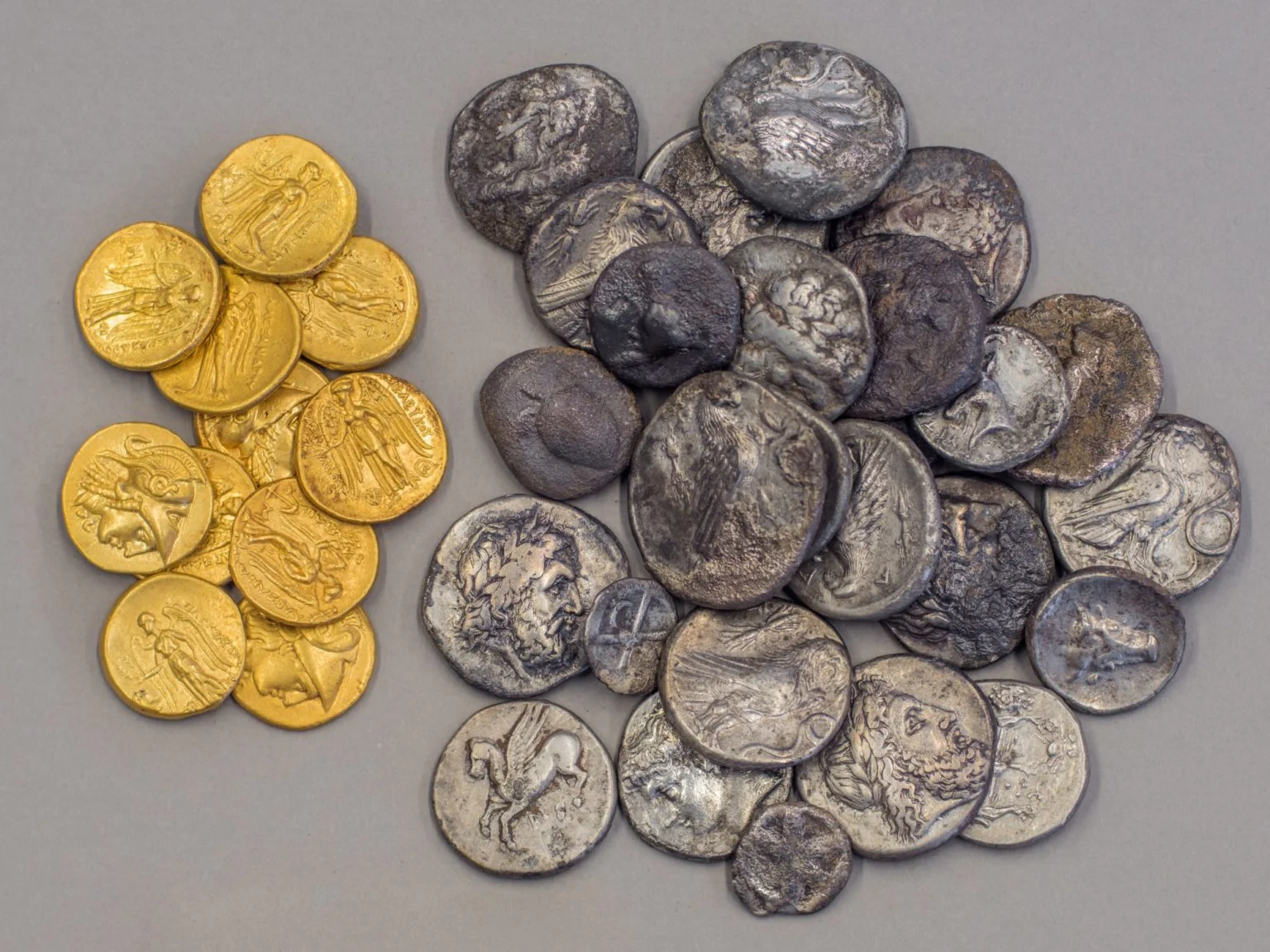Yavana means as
much as Greek or could even refer to a foreigner in ancient Indian literature.
The word may have a Persian origin and traveled with Cyrus the Great to the Northwestern provinces of
The Bharhut Yavana refers to
the relief of a Greek warrior on a Vedika pillar, discovered near the Stupa of Bharhut in
The characteristics of the Yavana warrior are his short curly hair and hair band (the Indians wore turban), his tunic, and boots. His hair band is well-known from coins minted for King Menander. The sheath of his broadsword is decorated with symbols of Buddhism such as a srivasta, also known in Hinduism, and a nandipada, the symbol of a bull’s hoof. The inscription at the top of the panel is in Brahmi script and says "Pillar-gift of the lay brother Mahila." Who this Mahila is remains a mystery.
Some sources claim that the Bharhut warrior could represent King Menander of Bactria who expanded his kingdom to the Punjab as far as Pataliputra. As a great Indo-Greek King, he ruled from 155 until 130 BC.
The Bharhut Yavana is not unique. The Stupa of Sanchi, commissioned by Asoka the Great in the 3rd century BC, displays another 18 of these Greek worshipers. They wear very recognizable Greek tunics, capes, and sandals. Also, they play Greek musical instruments like the aulos (double flute) and the carnyx (a Roman brass horn shaped as a capital G). Here too, the men have short curly hair and many wear a hair band as mentioned above.





